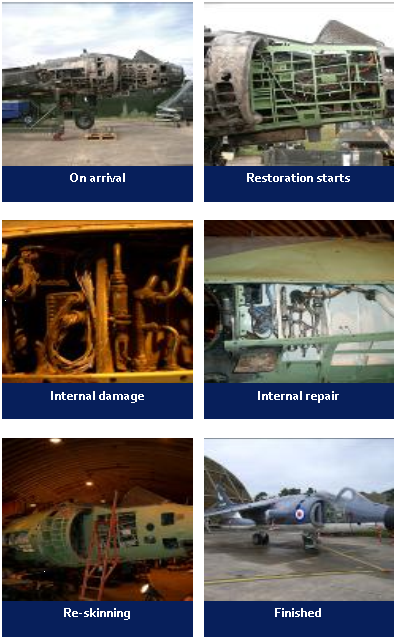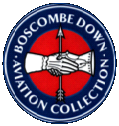|
The first version of the Sea Harrier to enter service was designated the FRS.1 for Fighter, Reconnaissance, Strike, and the first unit to operate the type was 700A Naval Air Squadron (NAS) which formed in June 1979. The major shortcoming of the Sea Harrier FRS.1 learned during operations particularly Operation CORPORATE (the campaign to liberate the Falklands) was its inability to fight ‘beyond visual range’ or in cloud. Work began to improve the aircraft and it was originally designated the FRS.2, but removal of the strike role after the end of the cold war led to it being re-designated the FA.2 (Fighter Attack). The last Sea Harriers bowed out of service when 801 NAS decommissioned in March 2006 being replaced in the short term by Harrier GR7s and 9s of the Joint Force Harrier. XZ457’s first Flight was in December 1979 with Test Pilot John Farley at the controls. The aircraft was delivered to 700A NAS Fleet Air Arm Yeovilton in January 1980, wearing code 104. It was then recoded 14 when 700A NAS became 899 NAS. From April to June 1982 during the Falklands War she was embarked on HMS Hermes. On 21st May following an attack on HMS Ardent, Lieutenant Clive (Spag) Morrell shot down one A-4Q Skyhawk A-307 with a Sidewinder and damaged another with 30mm cannon fire. The second aircraft was subsequently confirmed as a “victory” after the conflict when it was confirmed that the pilot had ejected with undercarriage failure whilst trying to land at Port Stanley airfield. On May 24th, Lieutenant-Commander Andy Auld shot down two Grupo 6 Daggers with Sidewinders over Pebble Island. Following its successful Falklands campaign, it was returned to 899 NAS Yeovilton and then transferred to British Aerospace and converted to an FA.2. She was then redelivered to the Royal Navy 899 NAS Yeovilton code 714. On the 20th October 1994 she suffered, an uncontained engine failure during take off and in the subsequent fire suffered extensive damage to the front fuselage particularly on the starboard side. The pilot Lieutenant-Commander Bayliss ejected successfully. As part of the aging airframe program the airframe which had a high time/fatigue usage was transferred to DERA (Boscombe Down) in 2001 so that fatigue and structural analysis could be carried out. However, before extensive work was carried out the decision was taken to withdraw the Sea Harrier Fleet from service and so this part of the program was cancelled. The airframe was then considered surplus to requirements and it was donated to BDAC in four major sections (fuselage, wing, elevator, and fin) with all Line Replaceable Units (LRUs), main undercarriage, and many panels missing. |

|
BDAC—Old Sarum Airfield Museum |

|
Sea Harrier FA2 XZ457 |